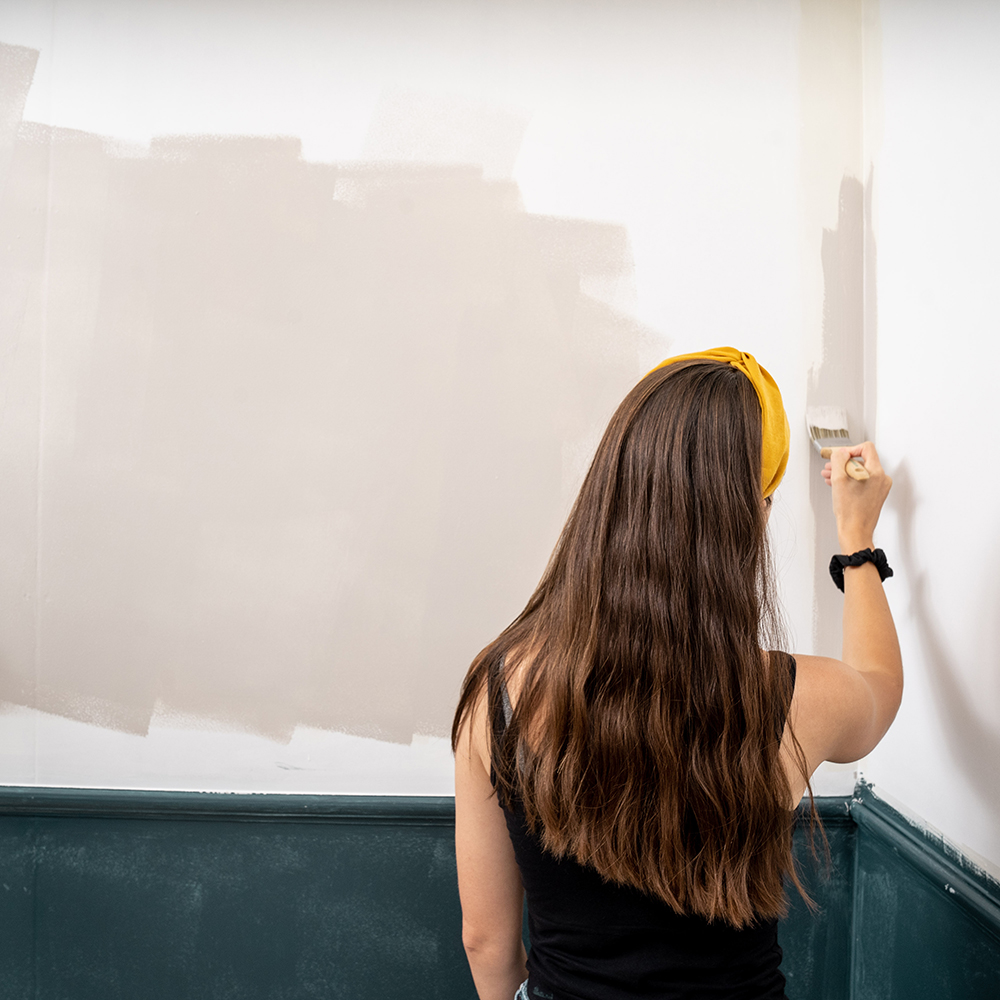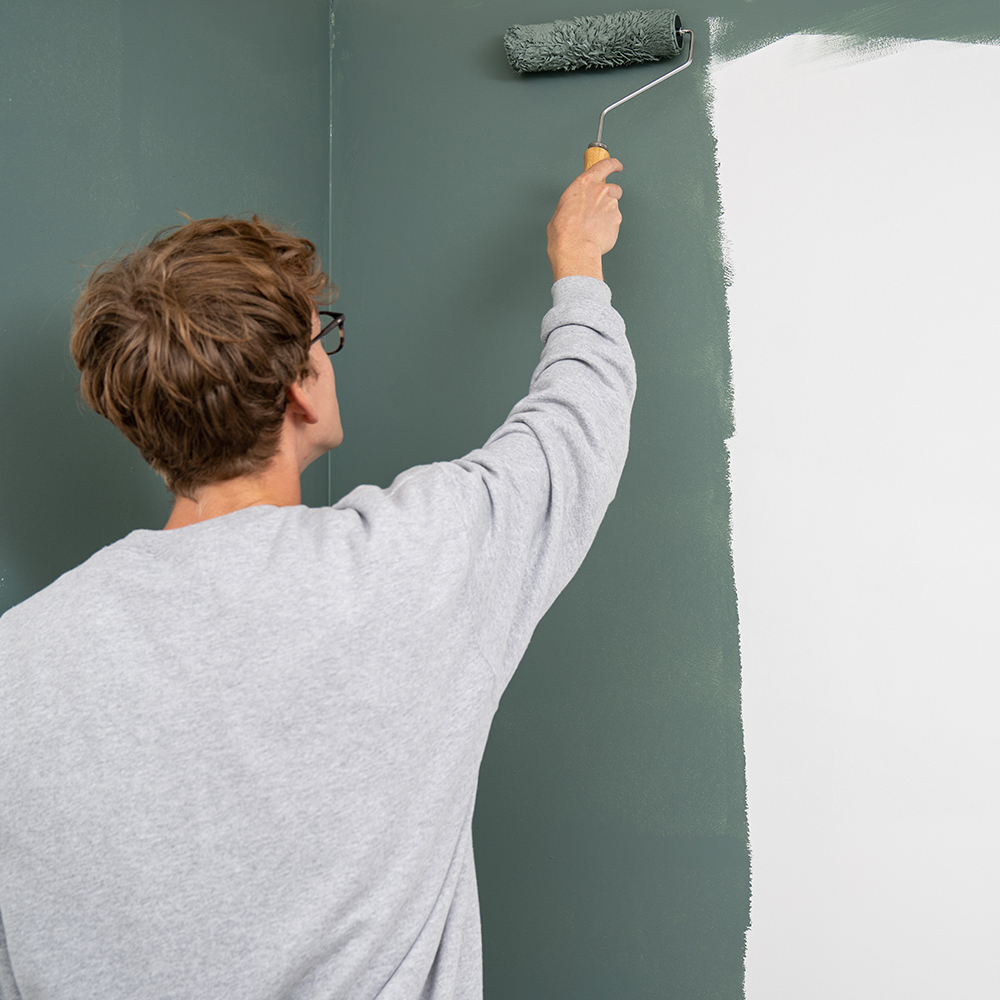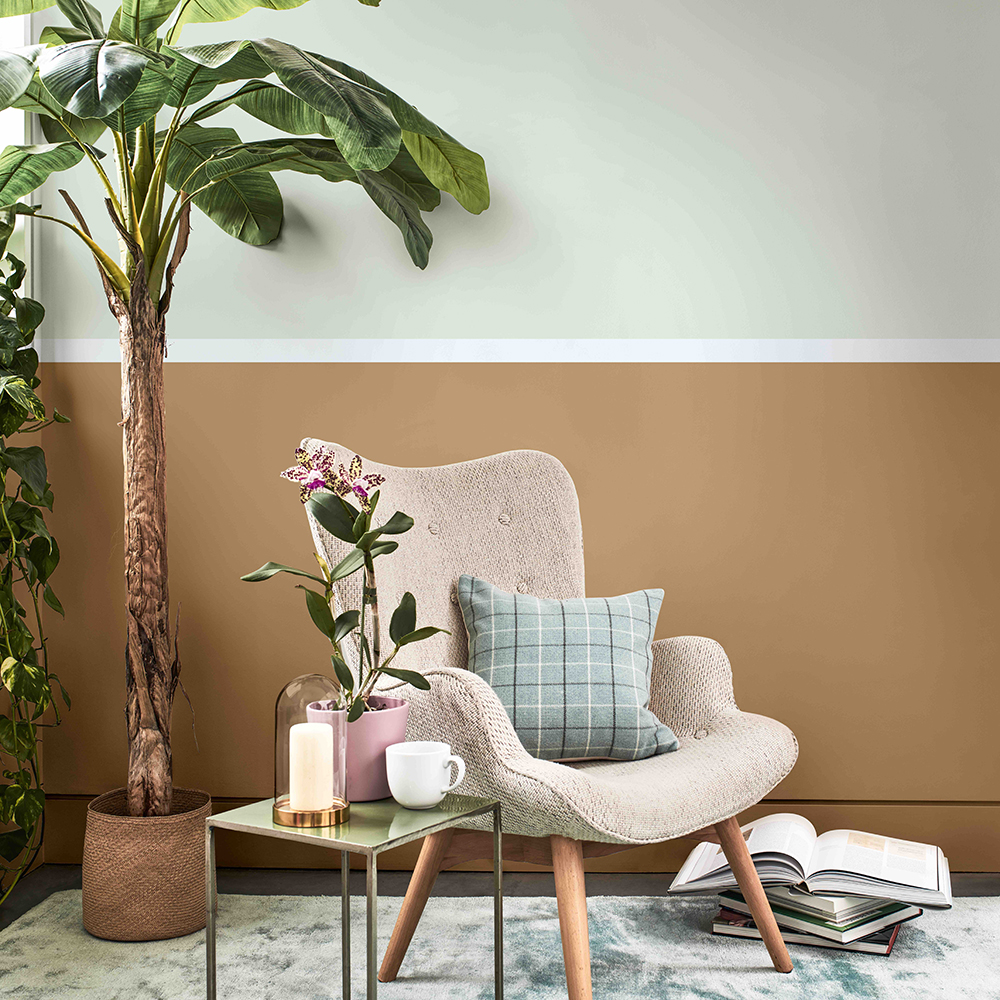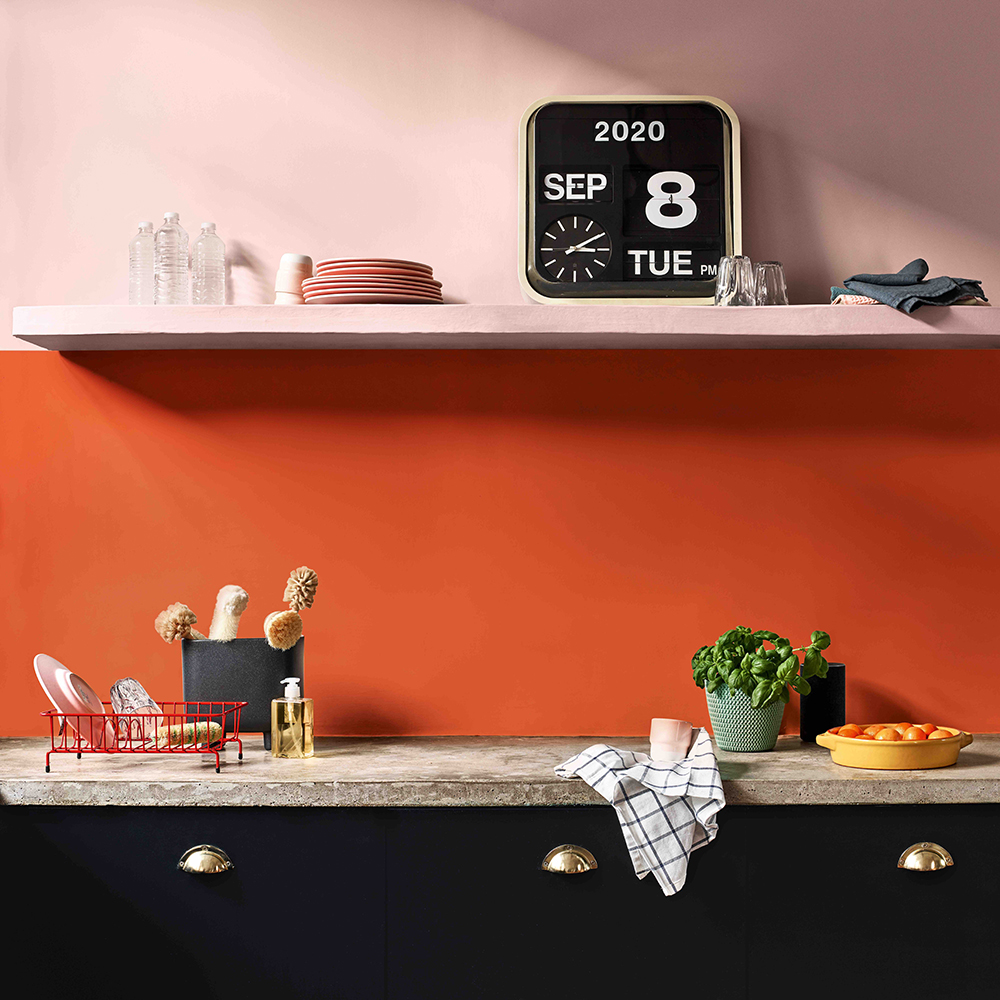How to paint a two-tone wall - 6 easy steps to create an on-trend feature wall
Create an Instagram-worthy paint effect in any room by dividing your walls into two shades

Why choose one colour when you can learn how to paint a two-tone wall using this DIY and decorating idea? If you’ve fallen in love with a paint shade but don’t want to cover an entire wall, or simply want to mix things up, then a two-tone wall effect is the perfect solution.
Combinations are endless, but a darker shade on the bottom with a neutral or lighter colour on the upper section will help make your rooms look taller!
Aaron Markwell, Colour Lead at COAT Paints says, 'My number one rule about creating two tone paint schemes is to keep things simple. Colour blocking is key. If you're decorating your hallway for example, do the dado rail, the wall below and the skirting boards all in the same colour. Try to keep bold or heavy colours on the bottom half, which will ground the scheme.'
How to paint a two-tone wall

If you’re unsure which colours will work best for your two-tone wall then play around with tester pot combinations on a piece of board or directly on the wall.
Marianne, Creative Director at Dulux told us, 'Combining two colours on the wall is such a stylish and simple way to transform an interior and the best way to do it is to use different tones of the same colour, one lighter and one darker.
'Splitting the wall into thirds gives the best effect and if you paint the section that goes down to the floor in the deepest shade, it helps to make a room feel grounded. Try painting the ceiling in the lighter shade too for a seamless effect.'
Follow these easy steps to paint your walls two colours...
Sign up to our newsletter for style inspiration, real homes, project and garden advice and shopping know-how
1. Mark your meeting point
Decide where you’d like your two colours to meet - whether that be halfway, three-quarters or further up the wall. Take a tape measure and mark this point on the wall using a pencil. Repeat at regular intervals across the wall.
2. Apply the lighter colour

Start by cutting in using a paint brush using the lighter of your two colours only on the half of the wall you want it to cover. Fill in the rest of the half using a roller. Paint slightly over the point where you want the dividing line to be.
If the original colour is quite strong, you may need to take some additional steps on how to paint over dark walls.
3. Create a dividing line
Take a length of string longer than the width of your wall. Cover it with chalk by running a piece along its length. Stretch the string across the wall, lining it up with your pencil marks. Secure the ends with masking tape.
4. Mask with tape
Once the string is straight, tap the string against the wall so it leaves a chalk line. Make sure the first paint colour is completely dry. Apply masking tape along this line to create your divide.
5. Apply the darker colour

6. Reveal your two-tone wall

Peel off the masking tape while your paint is still wet to unveil your two-tone wall design. You should have a crisp line between your two colours.
TIP: Paint around windows in a third colour to create a border and frame the view as seen in this clever living room paint idea.
Paint skirting boards in the same colour as the lower section to make the wall look taller or choose a traditional white or cream to create a border.

Why not try leaving a white border between your two colours? Mark the dividing line in the same way, then apply a white base coat. Once dry, add two rows of masking tape, one above and one below the line. Add more rows for a thicker border.
Paint the upper section in the lighter shade and the lower one in a darker colour as before. Remove the masking tape to reveal your border.

Why not opt for two shades of the same colour palette i.e. red and pink? Paint a shelf in one of the shades and position at the divide for a clever floating shelf effect.
You could even mix and match paint finishes to add texture i.e. a matt finish of the upper half with an eggshell sheen on the lower section.
Do two-tone walls make a room look bigger?
Painting walls in different colours is a great way to make a room appear bigger. Painting a darker colour on the bottom half and a lighter one on top that blends into the ceiling shade can make the room seem taller as there is no abrupt finishing line.
Similarly, painting the skirting boards in the same colour as the lower shade prevents there appearing to be a border between the walls and floors, therefore making them seem longer.
To make a room feel larger, paint the longest walls in a dark shade and the two shortest walls in lighter colours. This will emphasise the room's length.
When painting a room two colours, which wall should be darker?
As a rule, darker warmer shades visually pull a wall in towards you and lighter colours make the wall seem further away. You can make an off-square room feel more centred by painting two connecting walls in a dark colour and two in a lighter one.
Can you paint two feature walls?
It's best to stick to one statement feature per room to avoid it becoming too overpowering. A two-tone painted wall will work all around the room if one of the colours is more pared-back than the other. Avoid throwing a bold wallpaper into the mix alongside multiple paint effects, for example.

Steph Durrant is the Deputy Editor of Ideal Home’s sister magazine, Style at Home. Steph is an experienced journalist with more than 12 years under her belt working across the UK’s leading craft and interiors magazines. She first joined the team back in 2016 writing for both homes brands, specialising in all things craft, upcycling and DIY.